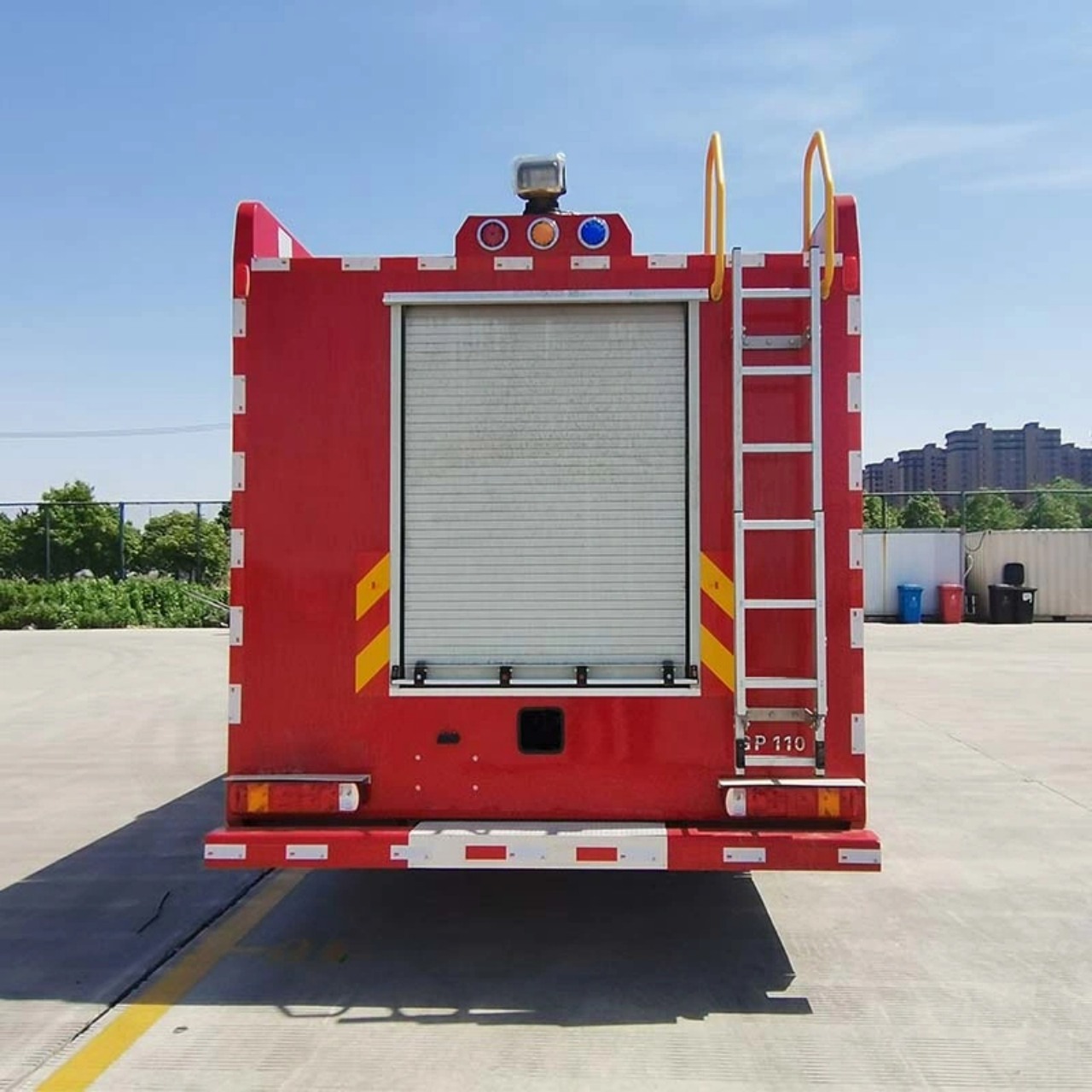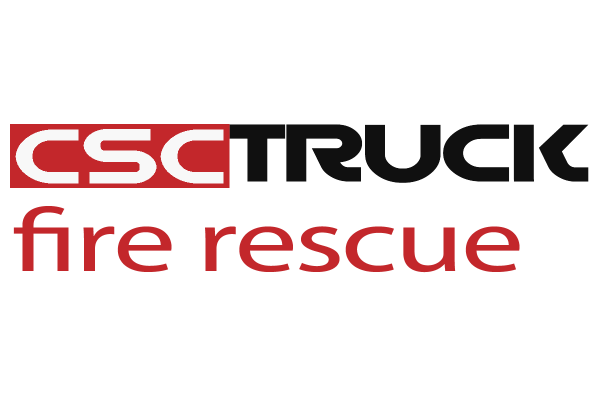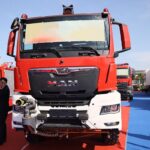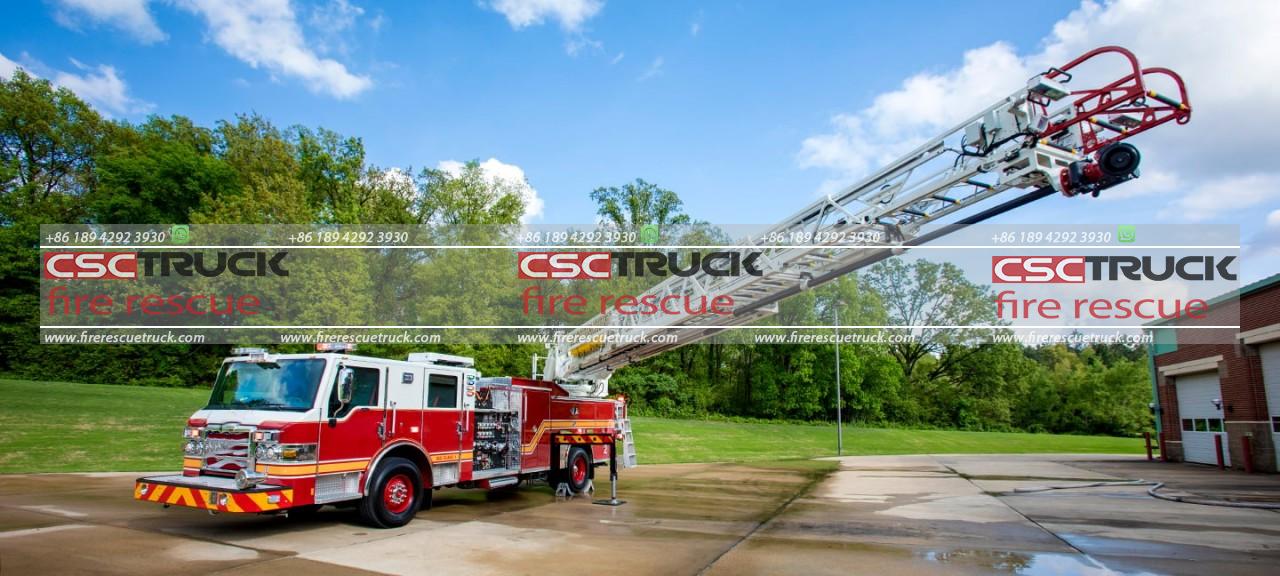In the dynamic and often unpredictable realm of emergency response, time is of the essence, and resource coordination can be the defining factor between life and death. As modern urban and industrial landscapes become more complex, so too do the challenges faced by firefighting and rescue services. Responding effectively to fires, accidents, hazardous materials, and rescue operations now demands more than just traditional fire engines. Enter the Versatile Combined Fire Truck — a new generation of all-in-one emergency vehicles designed to address multiple emergency scenarios with a single, highly equipped and mobile platform.
The Evolution of Firefighting Vehicles
Traditional firefighting vehicles were designed with single or limited functions, typically focused on water delivery, pump operation, or rescue. While this specialization allowed for optimization in specific tasks, it also meant fire departments required a fleet of vehicles to handle comprehensive operations. In congested urban environments or remote regions, deploying multiple specialized units is not always practical or efficient.
To streamline operations and increase response efficiency, fire departments began demanding multifunctional capabilities in 1 vehicle. Manufacturers responded by developing combined fire trucks, also referred to as multi-purpose or integrated emergency response vehicles. These trucks combine water and foam extinguishing capabilities, high-powered rescue tools, ladders or booms for high access, and even chemical or hazardous material handling systems—all on one chassis.
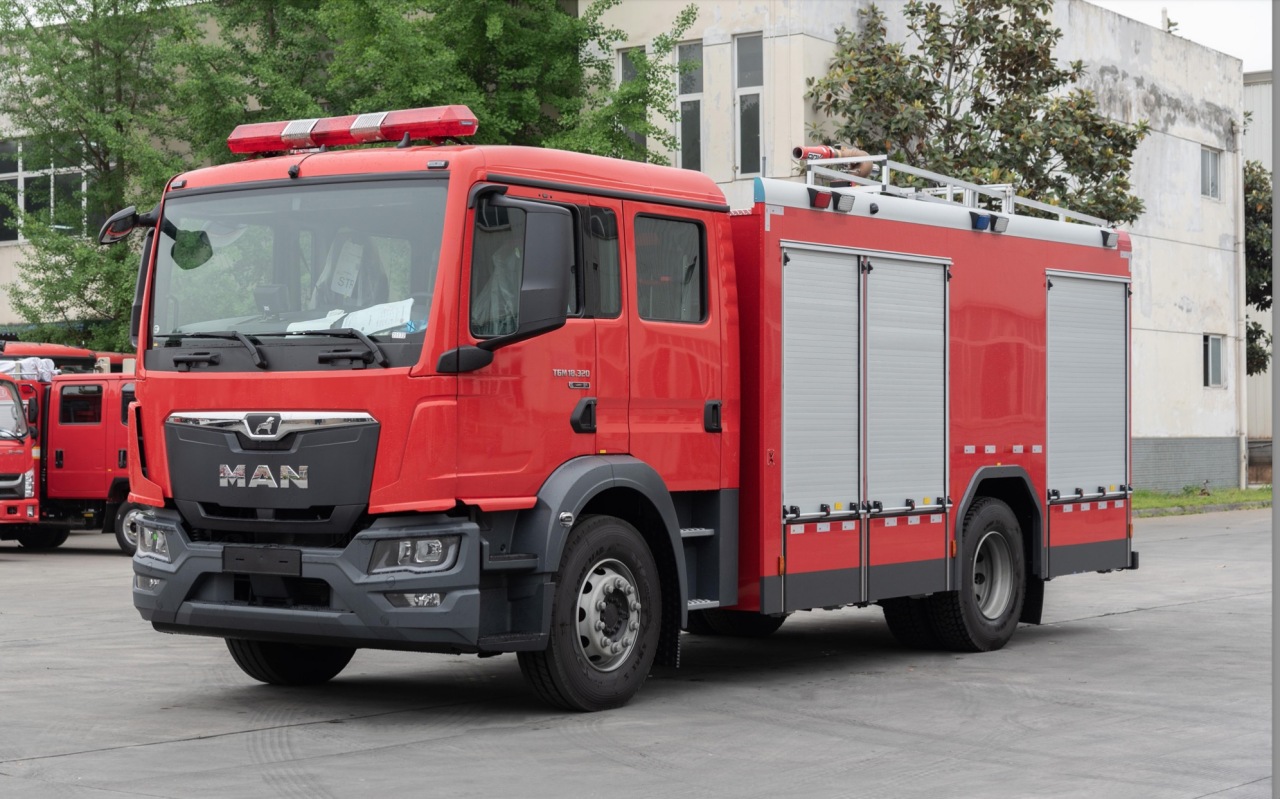
Key Features of the Combined Fire Truck
A truly versatile combined fire truck integrates several core emergency response functions. These features generally include:
1. Fire Suppression Systems
At its core, the truck must still fulfill the fundamental role of extinguishing fires. This includes:
- High-capacity water tanks (ranging from 2,000 to 10,000 liters).
- Foam systems for dealing with chemical or fuel fires.
- Advanced pumps capable of delivering high-pressure jets, including PTO-driven or diesel-powered pumps.
- Monitors (deck guns) that can be remotely operated.
2. Rescue Equipment
Rescue capabilities are central to the all-in-one approach. These trucks are equipped with:
- Hydraulic rescue tools, such as cutters and spreaders (commonly known as the “jaws of life“).
- Lifting bags and stabilizing equipment.
- Winches for vehicle recovery or lifting heavy debris.
- Telescopic ladders or aerial platforms for reaching high-rise buildings.
3. Hazardous Material Handling
Combined fire trucks can also be configured for HAZMAT scenarios:
- Gas and chemical detectors to assess environmental risks.
- Chemical neutralization agents.
- Protective equipment storage for responder safety.
- Sealed compartments to carry absorbents or containment barriers.
4. Medical and Emergency Aid
Many of these trucks are outfitted with first aid stations, defibrillators, oxygen tanks, and trauma kits to provide on-scene medical support before ambulances arrive.
5. Communication and Command
Integrated communication systems and mobile command units enable coordination:
- Real-time data transmission to control centers.
- Video surveillance for situational awareness.
- GPS and mapping for rapid navigation.
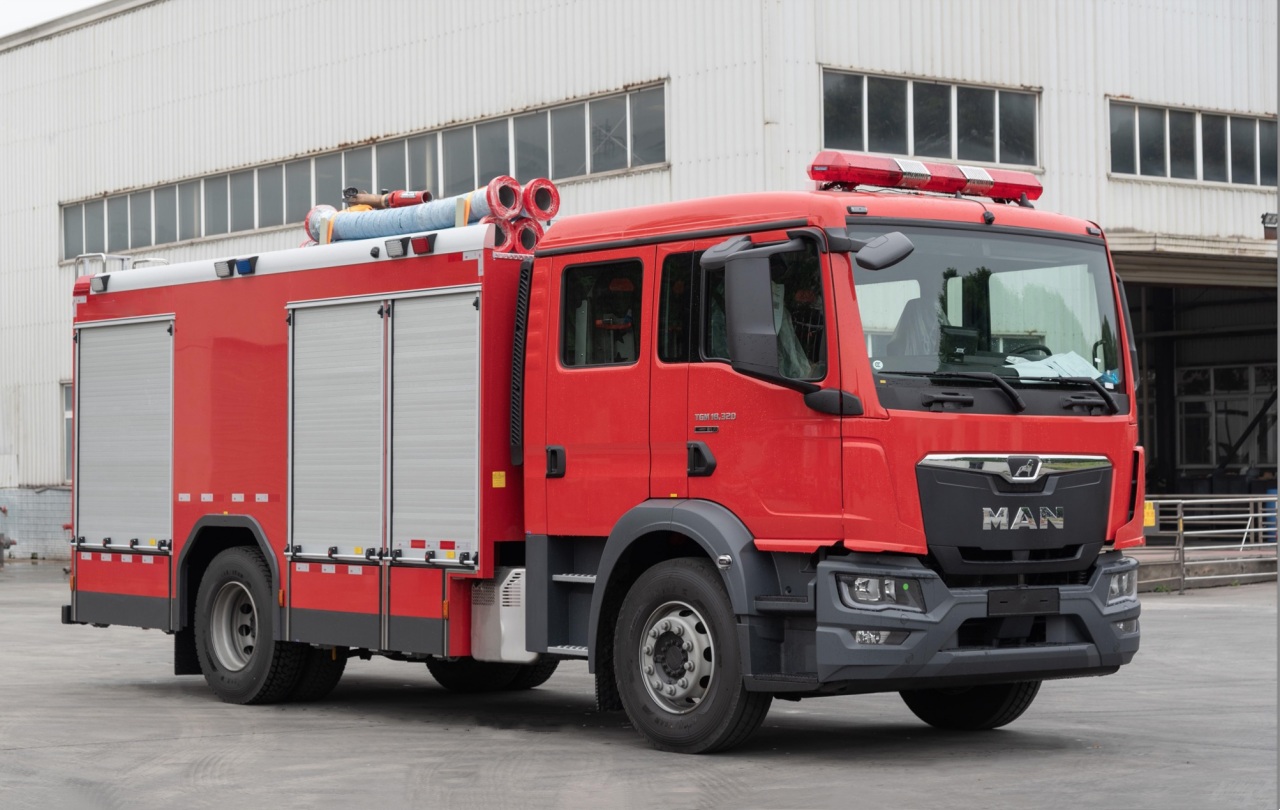
Advantages of a Combined Fire Truck
The adoption of versatile fire trucks brings multiple benefits, particularly in operational efficiency and rapid deployment.
A. Reduced Response Time
By carrying multiple types of emergency equipment, a combined fire truck reduces the need to wait for backup vehicles. The first responders can begin operations immediately, saving critical minutes.
B. Space and Fleet Optimization
Instead of maintaining and deploying several specialized vehicles, departments can rely on fewer, but more capable, trucks. This translates to:
- Lower maintenance costs.
- Reduced fuel consumption.
- Decreased logistical complexity.
C. Adaptability Across Incident Types
A combined unit can adapt mid-response. For instance, a fire might also involve structural collapse requiring rescue tools, or a vehicular crash might escalate into a fire or hazardous spill. The truck can pivot from one role to another seamlessly.
D. Ideal for Rural and Remote Deployment
In regions where resources are limited, a single multi-functional truck can provide a full-spectrum emergency response. This makes it an ideal solution for small towns, industrial sites, and isolated areas.
Applications in the Field
Urban Environments
Cities with dense populations and vertical infrastructure benefit immensely from these trucks. The ability to deal with traffic accidents, building fires, and elevator rescues, all from one vehicle, makes them indispensable in metropolitan firefighting fleets.
Industrial Zones
Factories and chemical plants often pose multifaceted hazards. Combined fire trucks equipped with foam systems and HAZMAT gear can tackle fires, toxic spills, and personnel rescues without needing additional units.
Airports
Airport emergency response demands fast and comprehensive action. The versatile combined fire truck can respond to fuel fires, evacuate passengers, and provide first aid all in one go.
Disaster Relief
During earthquakes, floods, or large-scale accidents, response teams need mobile units that can serve multiple functions. Combined fire trucks serve as field stations, rescue vehicles, and fire suppressors, making them ideal for emergency deployment.
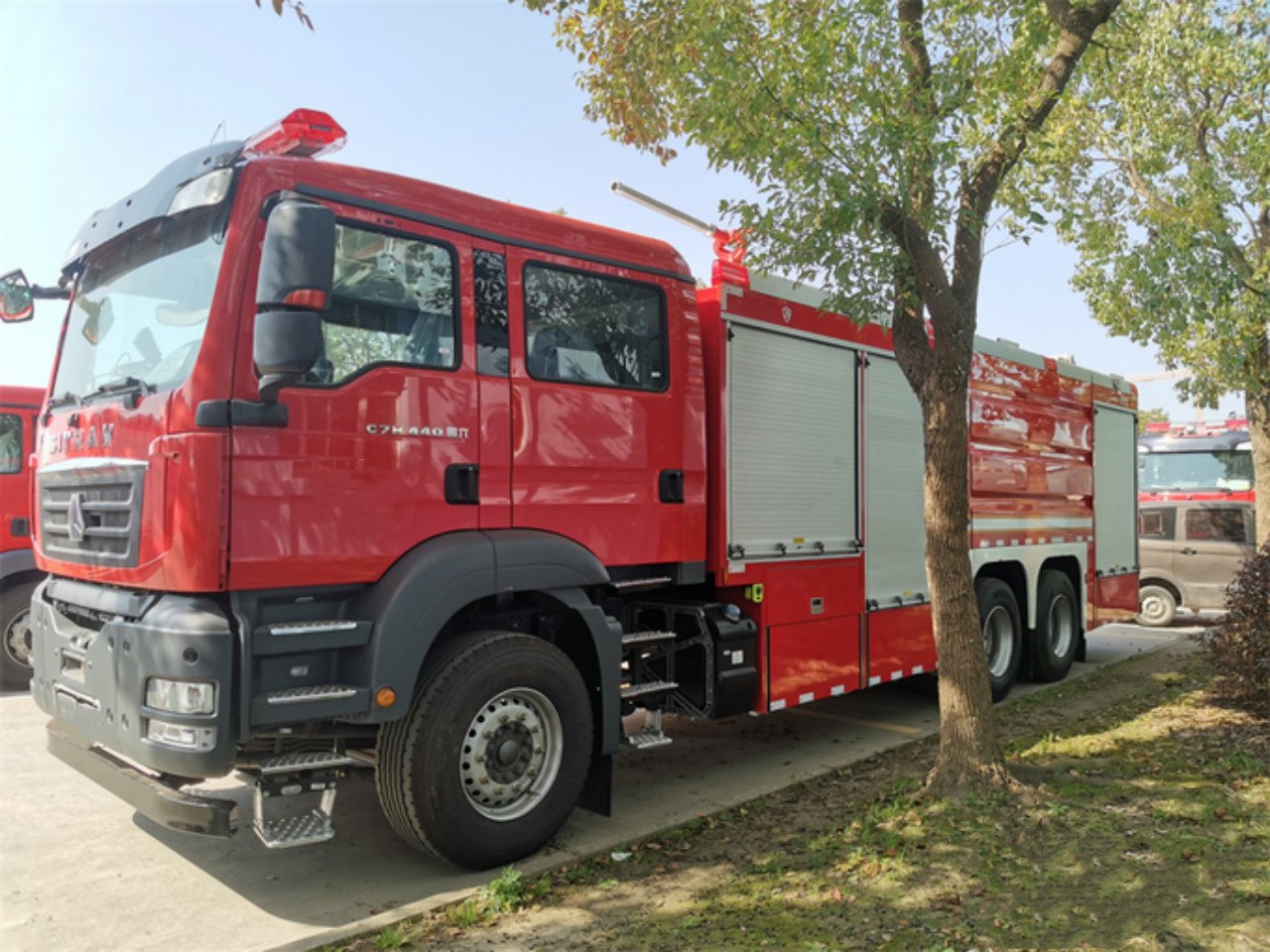
Customization and Modern Engineering
Manufacturers now offer modular configurations to tailor these vehicles to the specific needs of a department. Whether mounted on 4×2, 6×4, or 8×8 chassis, the trucks can be adapted for urban or off-road use. Popular chassis providers include Mercedes-Benz, Scania, MAN, and domestic options like HOWO or Dongfeng in some regions.
Other options include:
- Thermal imaging systems.
- Electric power take-offs to reduce fuel usage.
- Automated controls for ladder positioning or pump operation.
- Battery-electric or hybrid drivetrain models for environmentally conscious operations.
Challenges and Considerations
Despite their benefits, there are some considerations when integrating combined fire trucks into service:
- Training: Operators must be trained to handle multiple systems. These trucks are complex and require cross-disciplinary proficiency.
- Cost: Initial procurement costs are higher than single-function trucks.
- Maintenance: While reducing the number of vehicles, the maintenance of multi-system units can be more complex and requires specialized technicians.
However, these challenges are often outweighed by the operational efficiency and life-saving potential these trucks offer.
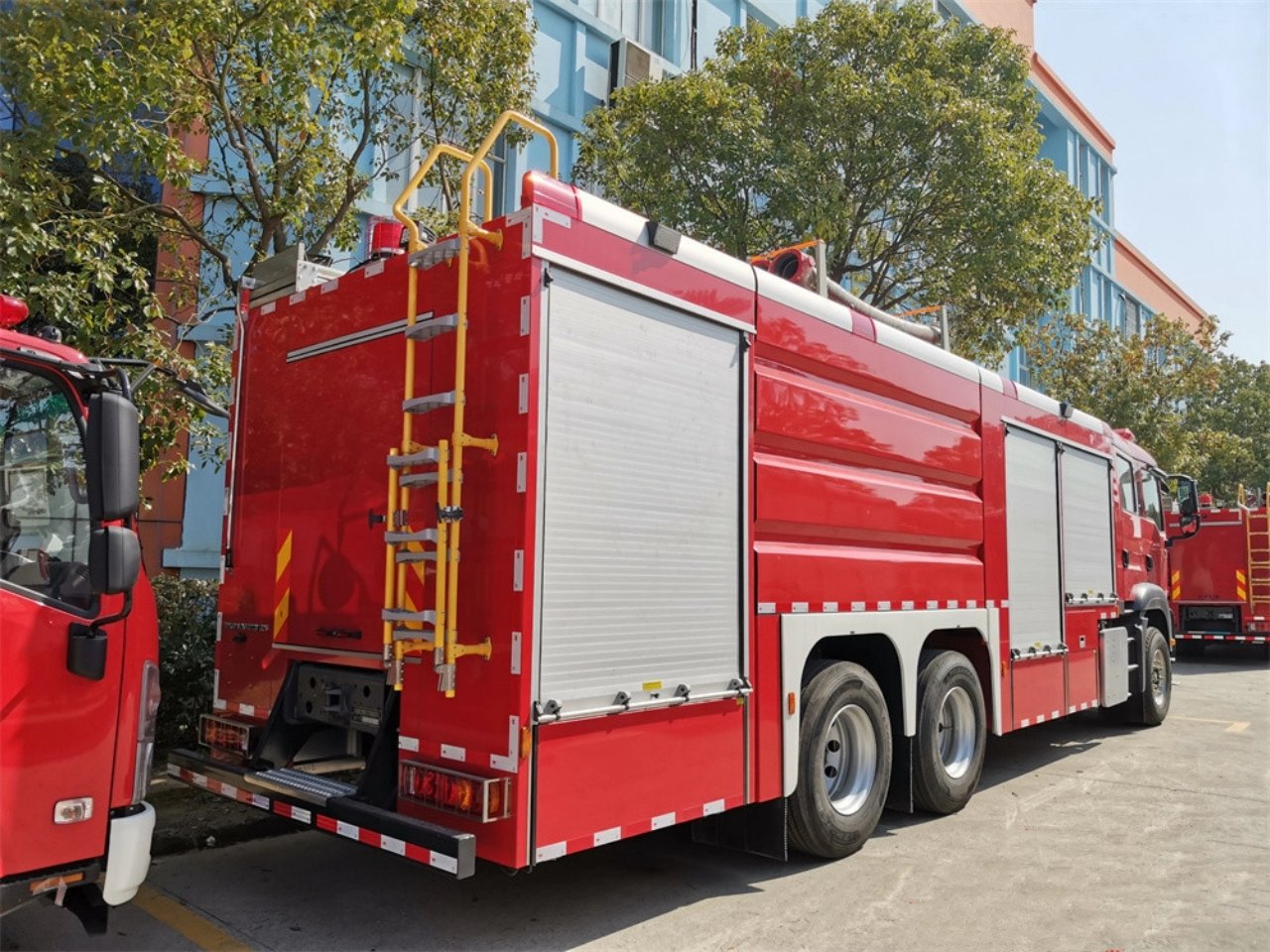
Conclusion
The Versatile Combined Fire Truck embodies the future of emergency response — agile, adaptable, and multi-functional. Converging fire suppression, rescue, hazardous material handling, and medical response into 1 vehicle represents a major leap forward in firefighting technology and strategy.
As urban centers grow, climate risks intensify, and emergencies become increasingly complex, these all-in-one emergency response units will be essential to modern firefighting. Departments seeking to enhance readiness, optimize budgets, and save lives should consider investing in the next generation of combined fire trucks — a true all-in-one solution for all-hazard response.
